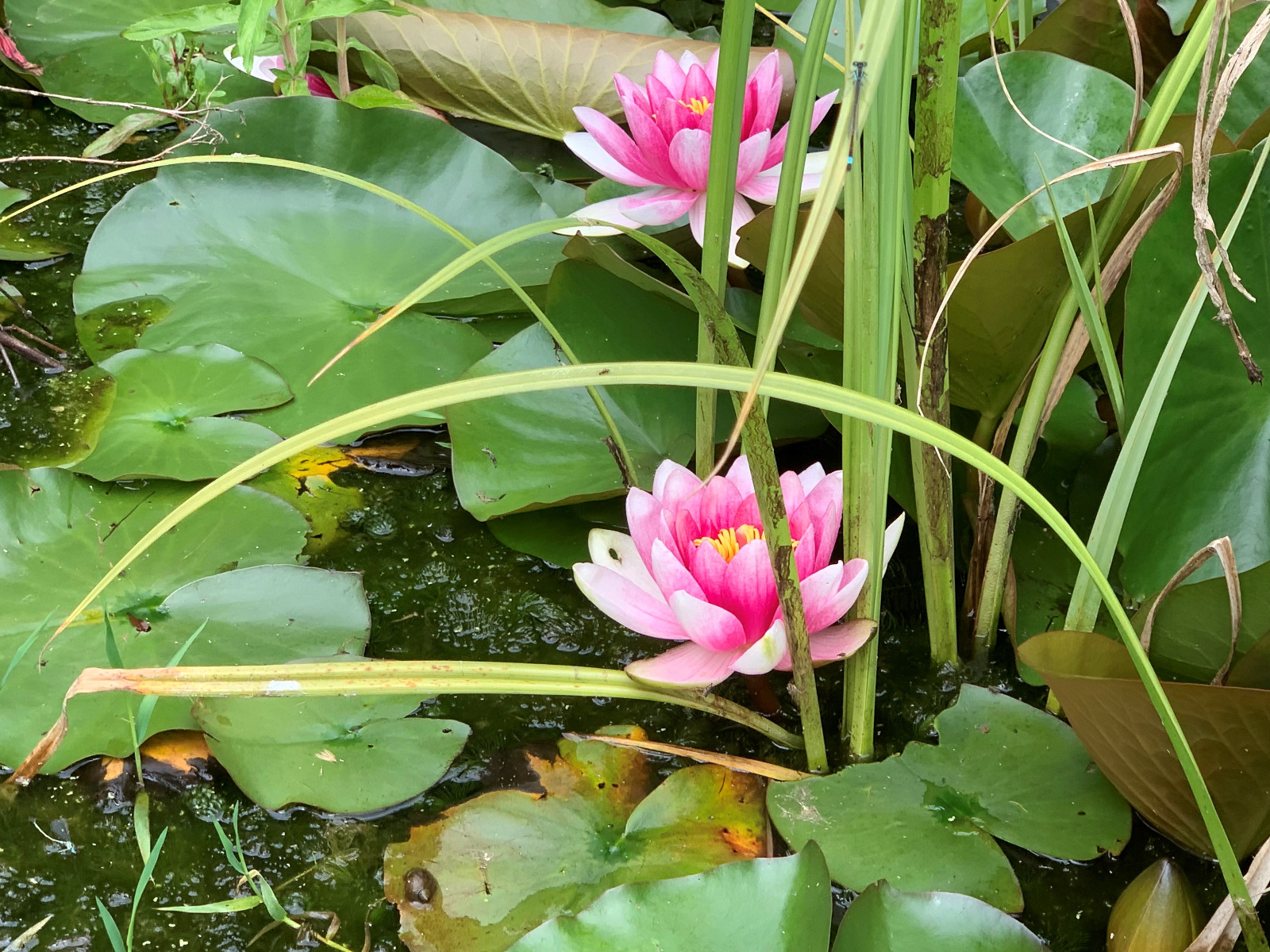Don't wait for Spring!
Every pond needs some maintenance, and this can be a dilemma for wildlife ponds, where the temptation is to let nature take its course. After a growing season where pond plants can often do a little too well, autumn is the best time of year to carry out some cleaning, fits well with the seasonal activity of wildlife and sets the pond up for a more successful spring.
It may seem a little counterintuitive but thinning out oxygenating plants and removing excess sediment is best done before the autumn leaves start to build up. The decomposition of these organics fuels the growth of algae and is part of the succession that sees natural ponds gradually become marshy ground as they silt up. Heavy organic loading also lowers the oxygen levels in ponds sealed by ice over the winter and this can be a problem for overwintering animals such as frogs. It’s far easier to remove any new leaf fall from a cleared pond than have to work around a lot of clutter.

For fishponds, a strip down clean can be carried out by storing as much water as is practical. Paddling pools or water butts can be used to store pond water and provide a temporary home for fish. Ideally, any container used for this purpose should have the existing filtration transferred to it but if the fish are unfed for a few days prior to the work and the temperatures remain cool, water quality and oxygen levels are unlikely to be a problem as long as crowding is avoided. Adding aeration via an air pump https://www.fishkeeper.co.uk/pond-products/pond-pumps/air-pumps is always a good option, especially in the case of fishes such as Orfe or Sterlet which are also likely to jump from uncovered containers. After saving as much water as possible (ideally 50% or more) then cut back excess plant growth, disposing of any discarded plant material on the compost heap or council green waste collection and never by dumping it into the wild. If your pond is home to wildlife, leave any plant waste beside the pond for a day or so to enable aquatic life to return to the water. Once the plant baskets are removed, the remaining water can be drained, and the sediment dealt with. There’s no getting away from the fact that a pond vacuum is the best tool for this job https://www.fishkeeper.co.uk/pond-products/miscellaneous-pond-products/pond-vacuums-skimmers but a solid handling pump, or even a dustpan can be useful. Of course, the great thing about the pondvac is that regular use can make a major clean unnecessary.
It’s best not to give your biological filtration a major clean at the same time, as beneficial bacterial populations will have taken a bit of a hit, along with background bugs and parasites. Remove any significant sludge from filter chambers and make a mental note to give it a couple of weeks before any extensive cleaning of media. If you want to add a little insurance, filter boosting bacteria cultures can help things remain stable https://www.fishkeeper.co.uk/pond-products/treatments-medications/filter-bacteria
Wildlife ponds require a little more care when removing plant material and sediment as you’re likely to find a lot more life as you go along and you may not have your plants conveniently planted in removable baskets. Processing any plants removed through a relatively deep container filled with pondwater will enable creatures such as dragonfly larvae and water slaters to escape to safety, and from there, piles can be made beside the pond as mentioned above. It may be tempting to share excess pond plants with other pond enthusiasts but be aware that this may spread harmful invasive plants https://www.gov.uk/government/news/be-plant-wise-help-the-fight-against-the-weeds-that-are-taking-over-our-waterways. A net can be a useful tool for checking sediment for life and you may want to use the same deep container to allow creatures to escape from the more slowly sinking silt before tipping the cloudy water from the surface of the vessel. If you find that the base of the pond is particularly full of life, you may wish to retain some of the sediment. Wildlife ponds run better with rainwater, so you may wish to replace any discarded water from water butts or even let the pond refill gradually once any removed clean water is returned to the pond. Tap water can be used but make sure to use a good conditioner to detoxify chlorine and other additives https://www.fishkeeper.co.uk/pond-products/treatments-medications/dechlorinators
So, forget about spring cleaning and make the most of the autumn cleaning window. If nothing else, the water will be a lot warmer!


